

réka.koncz, Barabás, Hungary
“Like a fingerprint, every site is unique.” — Annamária Réka Koncz
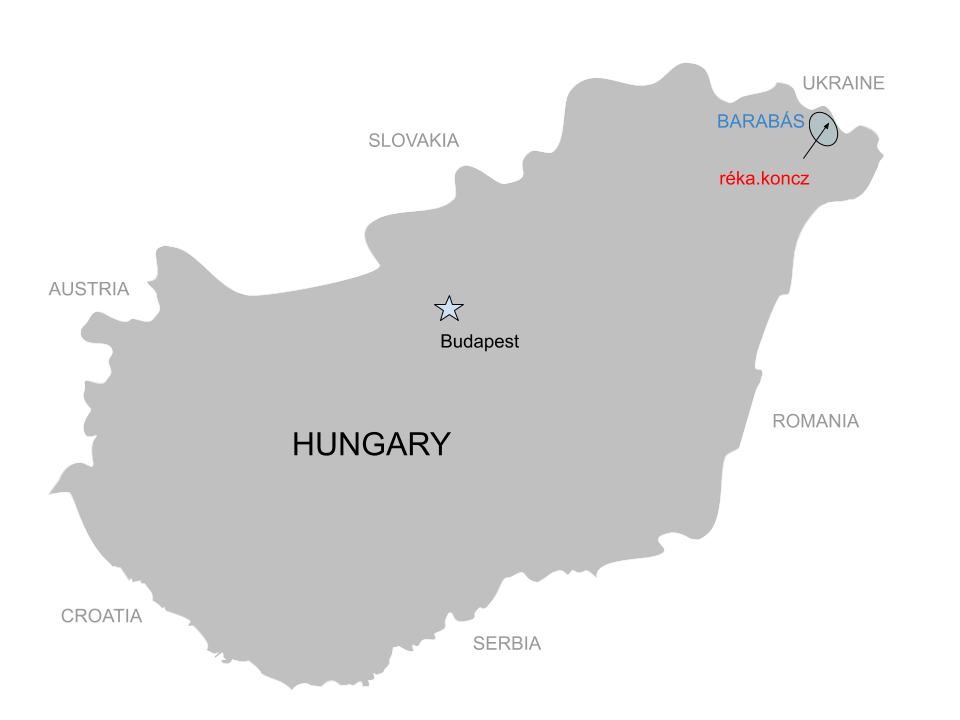
At a Glance
https://www.reka-koncz.com
Barabás
Continental
rhyolite, andesite, dacite and tuffs
Volcanic hills and mountains
Királyleányka, Furmint, Rhine Riesling, Yellow Muscat and Hárslevelű.
3 hectares
Organic and regenerative.
Natural
Barabás
Continental
rhyolite, andesite, dacite and tuffs
Volcanic hills and mountains
Királyleányka, Furmint, Rhine Riesling, Yellow Muscat and Hárslevelű.
3 hectares
Organic and regenerative.
Natural

Annamária Réka Koncz
The People
This is one of those series of connections and leaps of faith that make the wine world worth it. I had seen these wines popping up here and there in Copenhagen and then a contact I have in Hungary said he visited and was blown away. I sent the typical info@ email and as it turns out, Annamária was heading to California with her husband Sven in a few short months. Catherine and I ended up taking them around to meet and taste with Evan at Ruth Lewandowski, Tracey at Donkey and Goat, Ryan and Megan at Rhyme, and Duncan and Nathan at Arnot-Roberts. It was surreal to host a winemaker in CA with no real idea about their wines but instead just who they are.

Annamária and Sven having lunch at the Dry Creek General Store
Annamária is both soft spoken and careful with her words, a nice counterpoint to the headstrong and risk heavy nature of her viticulture and winemaking. She had her academic start with a degree in Horticultural Engineering in Deberecen (Hungary) and then a Masters in Agriculture (microbiology/yeast evaluation) in Copenhagen, Denmark. After a series of internships (Slovenia, Italy, France) and living in the natural wine centric community in Copenhagen, she realized she had something really special right where she grew up.

Annamária during Harvest -- Photo credit Tilo Wiedensohler
Her hometown is called Vásárosnamény near the Ukrainian border in eastern Hungary. She came back to purchase 3 hectares of old vines about 20 minutes northeast near the village of Barabás. Since her first release in 2016, she is the only commercial (and certainly exported) producer in a once highly regarded but currently forgotten region. Technically a part of the Bükk region, the climate and soils are more akin to nearby Tokaj which is about a 1.5 hours drive due west.

Annamária and Sven having lunch at the Dry Creek General Store
Annamária is both soft spoken and careful with her words, a nice counterpoint to the headstrong and risk heavy nature of her viticulture and winemaking. She had her academic start with a degree in Horticultural Engineering in Deberecen (Hungary) and then a Masters in Agriculture (microbiology/yeast evaluation) in Copenhagen, Denmark. After a series of internships (Slovenia, Italy, France) and living in the natural wine centric community in Copenhagen, she realized she had something really special right where she grew up.

Annamária during Harvest -- Photo credit Tilo Wiedensohler
Her hometown is called Vásárosnamény near the Ukrainian border in eastern Hungary. She came back to purchase 3 hectares of old vines about 20 minutes northeast near the village of Barabás. Since her first release in 2016, she is the only commercial (and certainly exported) producer in a once highly regarded but currently forgotten region. Technically a part of the Bükk region, the climate and soils are more akin to nearby Tokaj which is about a 1.5 hours drive due west.
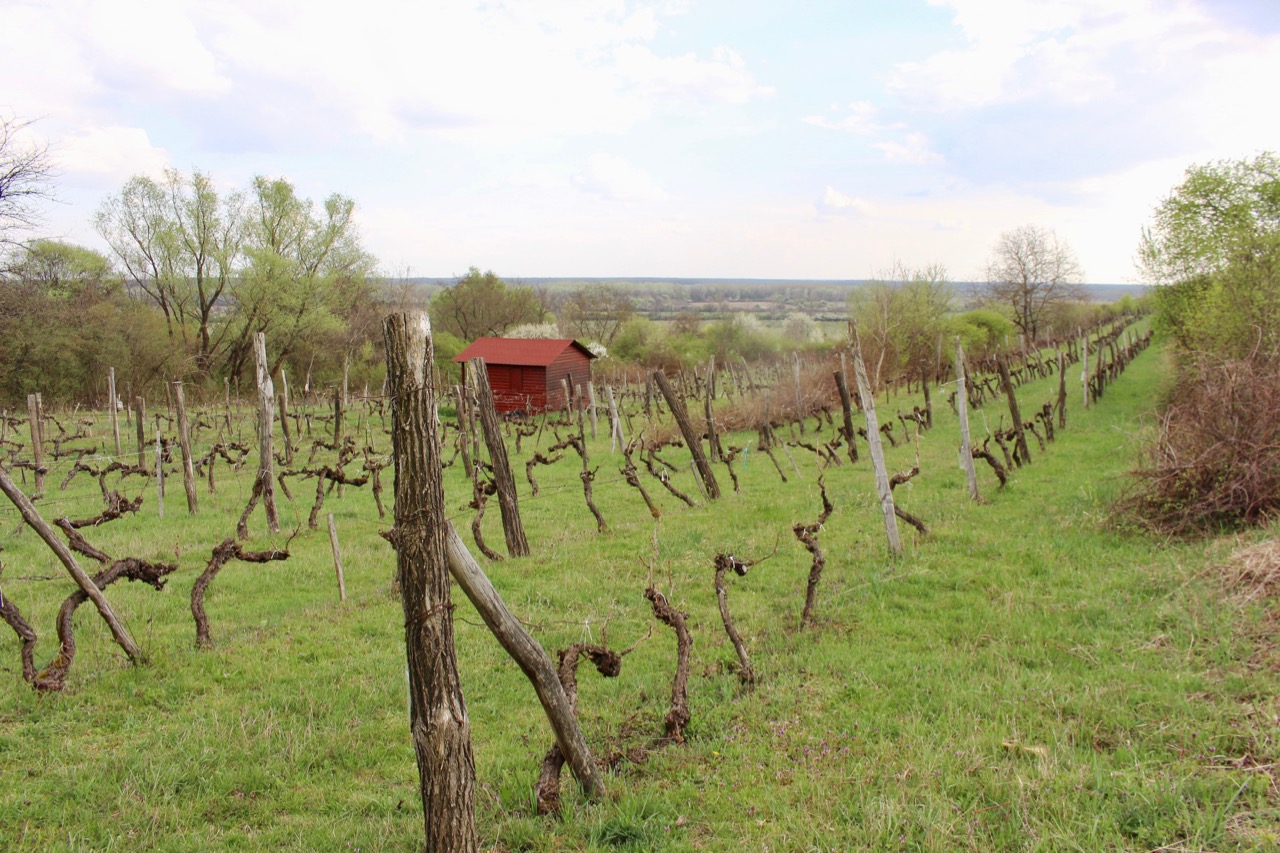
In the vineyard
Vineyards
In 2019 we decided to make the drive over from Tokaj. It was surreal to walk up a long dirt road with thick forests on both sides, but also see stakes and dilapidated old vines growing in the thick woods as well – completely consumed after decades of neglect. After passing a derelict press house, we finally made it up to her parcels. 40-100 year old vines of Királyleányka, Hárslevelű, Sárga Muskotály (yellow muscat), Rajnai Rizling (Rhine Riesling) and Furmint. Many with 6-10 foot arms sprawling out with multiple birds nests burrowed in. The place is buzzing with birds, bugs, and even some openings to badger dens. As you walk around you eventually end up at an obelisk with the colors of the Hungarian flag. This is the border with Ukraine and within eyesight, you can also see occupied guard towers on the next few hills over. The biological and geopolitical diversity here is palpable.
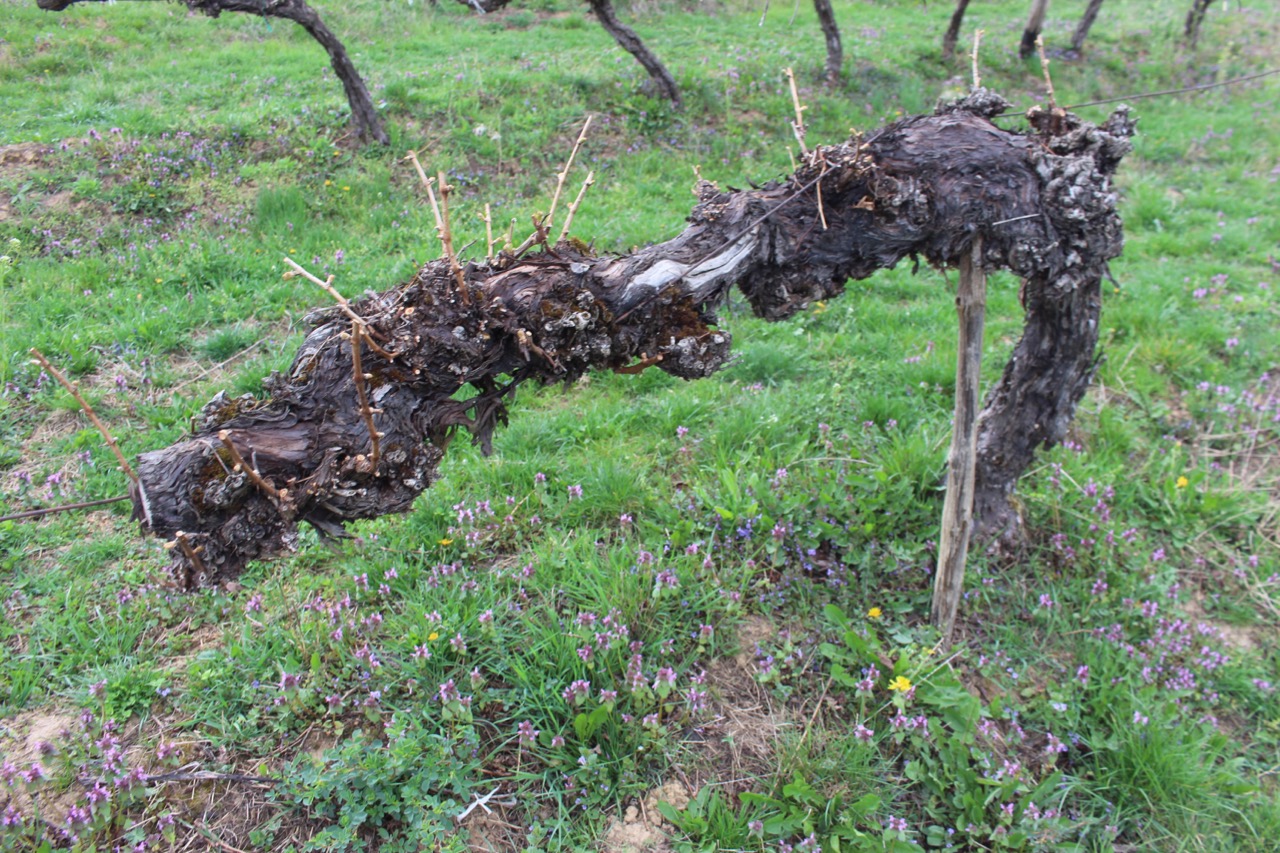
Old vine
The soil here is intensely volcanic. Vitreous rhyolite lava, perlite (similar to Tarcal in Tokaj), and plagioclase rhyolite (high in silicate) form most of the layers. Closer to the surface it’s dominated by loamy loess. The wines are not lacking in aromatics or acidity and are perfect for handling both sparkling production as well as mild to more intense skin maceration.

Old vine
The soil here is intensely volcanic. Vitreous rhyolite lava, perlite (similar to Tarcal in Tokaj), and plagioclase rhyolite (high in silicate) form most of the layers. Closer to the surface it’s dominated by loamy loess. The wines are not lacking in aromatics or acidity and are perfect for handling both sparkling production as well as mild to more intense skin maceration.
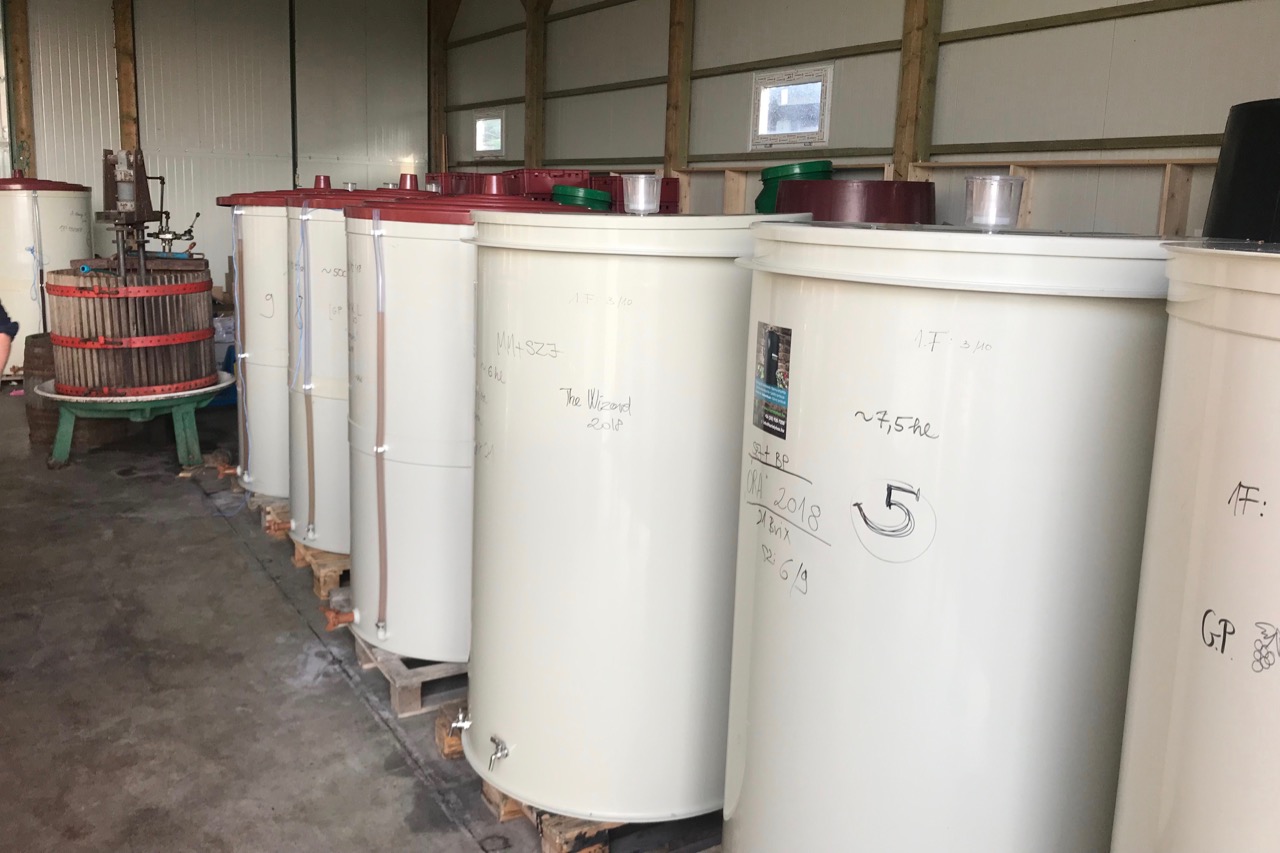
Plastic fermenters in the cellar
Winemaking
As for winemaking, she has a wooden basket press and mostly larger 1000L top plastic fermenters and a few pristine used barrels she purchased from Tokaji Hétszőlő. Grapes are usually destemmed, foot crushing is standard, and punchdowns are the main techniques. Wines are typically fermented and aged in plastic until bottling.
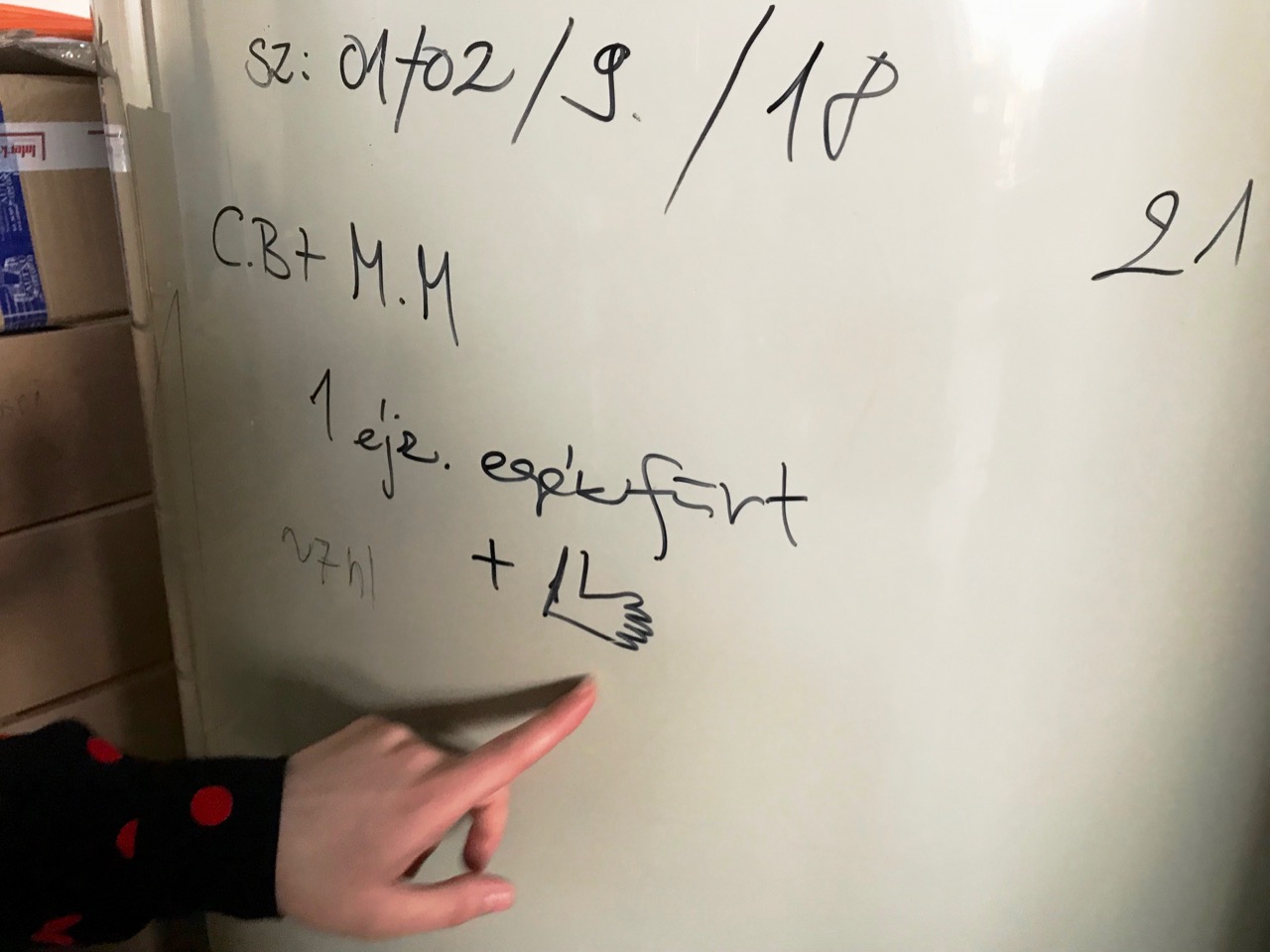
Foot crushing happened

Foot crushing happened

Red Wine , Organic
Kékfrankos;
13%
1.3 g/l
5.9 g/l
Kékfrankos;
13%
1.3 g/l
5.9 g/l
On our last visit we were treated to a vertical of this wine. Despite how ethereal and delicate it is, age suits it very well. It is 100% sourced from a certified organic grower in the Mátra appellation (Nagyréde). The soil and site are super close to Losonci, so a thin layer of brown top soil over dense volcanic andesite. 50% is gently crushed with a short 4-5 days of maceration with the stems. This lot continues fermentation in fiberglass and plastic. The other 50% is very similar to the hamburger method – Crushed and destemmed berries layered with whole uncrushed bunches with enough juice to support 14 days together. It’s then basket pressed and blended. On the Hungarian label, she’s not allowed to call this “Kékfrankos” because it lacks a protected origin. She just calls it “Kék…nkos.” In any case, the color looks more like a Kadarka/light Gamay at first glance, but its brightness is matched with some texture and structure. Both meditative and ideal for happy hour. Unlike any other Kékfrankos in the portfolio.

White Wine , Organic
Királyleányka; Riesling; Furmint; Hárslevelű;
13%
3.3 g/l
6 g/l
Királyleányka; Riesling; Furmint; Hárslevelű;
13%
3.3 g/l
6 g/l
30% is sourced from 50-55 year old vines of Királyleányka, Rhein Riesling, Hárslevelű revived by Annamária and her parents, the 70% of Furmint comes from a certified organic grower in the Tokaj village of Mád (Hintós and Dancka). All of the fruit comes from a myriad of volcanic soils. The furmint was destemmed followed with 2 weeks on the skins and basket pressed into punch downs. Her own fruit was picked together as a field blend and co-fermented in egg shaped fermenters. A mixture of whole cluster and destemmed fruit, everything spent 4-5 days on the skins before being basket pressed to finish fermentation in fiberglass. The two parts were blended in August of 2022. On the Hungarian label, she’s not able to write Furmint because of the mixture of appellations, so it’s just listed as “F..mint.” Deeply structured, full of life and rustic in the best possible way.

White Wine , Organic
Királyleányka; Riesling; Furmint; Hárslevelű;
11.5%
1.3 g/l
6.2 g/l
Királyleányka; Riesling; Furmint; Hárslevelű;
11.5%
1.3 g/l
6.2 g/l
30% is sourced from 50-55 year old vines of Királyleányka, Rhein Riesling, Hárslevelű revived by Annamária and her parents, the 70% of Furmint comes from a certified organic grower in the Tokaj village of Mád (Hintós and Dancka). All of the fruit comes from a myriad of volcanic soils. The furmint was destemmed followed with 2 weeks on the skins and basket pressed into punch downs. Her own fruit was picked together as a field blend and co-fermented in egg shaped fermenters. A mixture of whole cluster and destemmed fruit, everything spent 4-5 days on the skins before being basket pressed to finish fermentation in fiberglass. The two parts were blended in August of 2022. On the Hungarian label, she’s not able to write Furmint because of the mixture of appellations, so it’s just listed as “F..mint.” Deeply structured, full of life and rustic in the best possible way.

White Wine , Organic
Furmint;
13%
8.3 g/l
7 g/l
Furmint;
13%
8.3 g/l
7 g/l
This is only the second vintage of this wine. The Furmint is sourced from the 20-30 year old loamy and volcanic rhyolite heavy soils of the Hintós and Danczka vineyards in the Tokaji Village of Mád. Hintós is in the northeastern corner of Mád and Danczka is in the southwest – a cross section of the village. Danczka is named after the Polish port city of Gdańsk (Danzig in German) and was used to get Tokaji wines to Sweden and Russia. Half of the fruit was macerated in alternation layers of whole cluster and destemmed grapes for about two weeks in closed off containers. Fermentation was completed in fiberglass before getting volatile. The other half was destemmed and direct basket pressed into a mixture of Clayver Amphoras and Apollo Flextank Egg fermenters. All in all, two vinification methods in three different vessels. Unsurprisingly, the Hungarian authorities have no idea what to do with this, so on the local labels, she can’t even write Furmint.

White Wine , Organic
Furmint;
12.5%
5 g/l
6.4 g/l
Furmint;
12.5%
5 g/l
6.4 g/l
This is only the second vintage of this wine. The Furmint is sourced from the 20-30 year old loamy and volcanic rhyolite heavy soils of the Hintós and Danczka vineyards in the Tokaji Village of Mád. Hintós is in the northeastern corner of Mád and Danczka is in the southwest – a cross section of the village. Danczka is named after the Polish port city of Gdańsk (Danzig in German) and was used to get Tokaji wines to Sweden and Russia. Half of the fruit was macerated in alternation layers of whole cluster and destemmed grapes for about two weeks in closed off containers. Fermentation was completed in fiberglass before getting volatile. The other half was destemmed and direct basket pressed into a mixture of Clayver Amphoras and Apollo Flextank Egg fermenters. All in all, two vinification methods in three different vessels. Unsurprisingly, the Hungarian authorities have no idea what to do with this, so on the local labels, she can’t even write Furmint.

White Wine , Organic
Hárslevelű; Furmint;
11.4%
6 g/l
7.1 g/l
Hárslevelű; Furmint;
11.4%
6 g/l
7.1 g/l
In speaking with Annamária about this wine it was her desire to avoid the typical “Orange wine taste” as she put it. A placeless natural orange “yeah, I’ve had this before” kind of taste. It’s also an admitted ode to Tom Petty’s “Southern Accents,” and another collaboration with some organically sourced 65% Hárslevelű and 35% Furmint from the Mátra appellation. The Hárslevelű is crushed just enough to yield enough juice to soak whole cluster for about two weeks. The Furmint was mostly direct press with small fractions spending one week on the skins. There’s no Sauvignon Blanc this vintage, so it’s a little more on the macerated side with more whole cluster and stem inclusion. Fermented dry separately in fiberglass and plastic, they were blended in August 2023. We also have 2 magnums up for grabs as well.

Red Wine , Organic
Cabernet Sauvignon; Kékfrankos;
13%
6 g/l
5.7 g/l
Cabernet Sauvignon; Kékfrankos;
13%
6 g/l
5.7 g/l
This is the 1st vintage of this wine. According to Annamária, the liner notes of a CD or record are “where you find all of the fun stuff.” This is basically a sneak peak into what she’s enjoying the most right now. The fruit is not however from her region, but from 15 year old vines in the volcanic Mátra (Nagyréde) appellation. 77% Cabernet Sauvignon, 23% Kékfrankos, both are super delicately crushed. The main aim here is to get enough juice for a healthy fermentation, a little tannic touch, but nothing too oxidative. After five days of closed top fermentation, the wine continues in fiberglass and plastic. Hand disgorged and bottled with just enough RS to produce a subtle 1.5 bar, it does carry some red wine structure, but with a burst of energy and lightness as well. She only made 1000 bottles and we are lucky enough to have 100 of them.